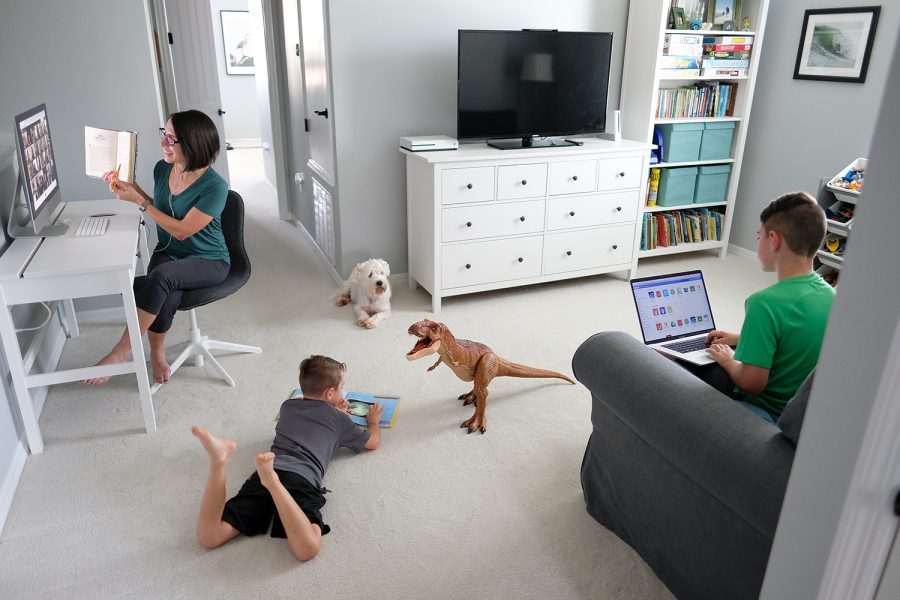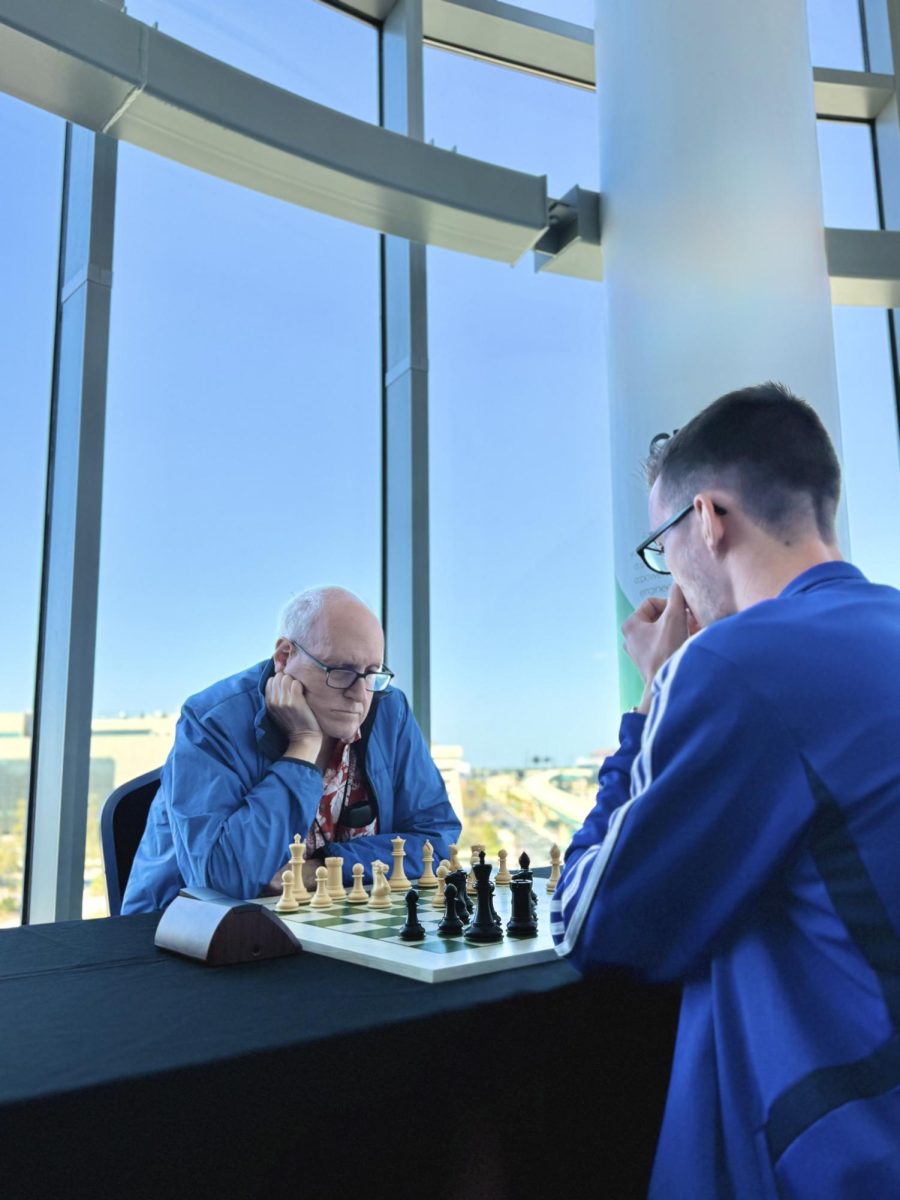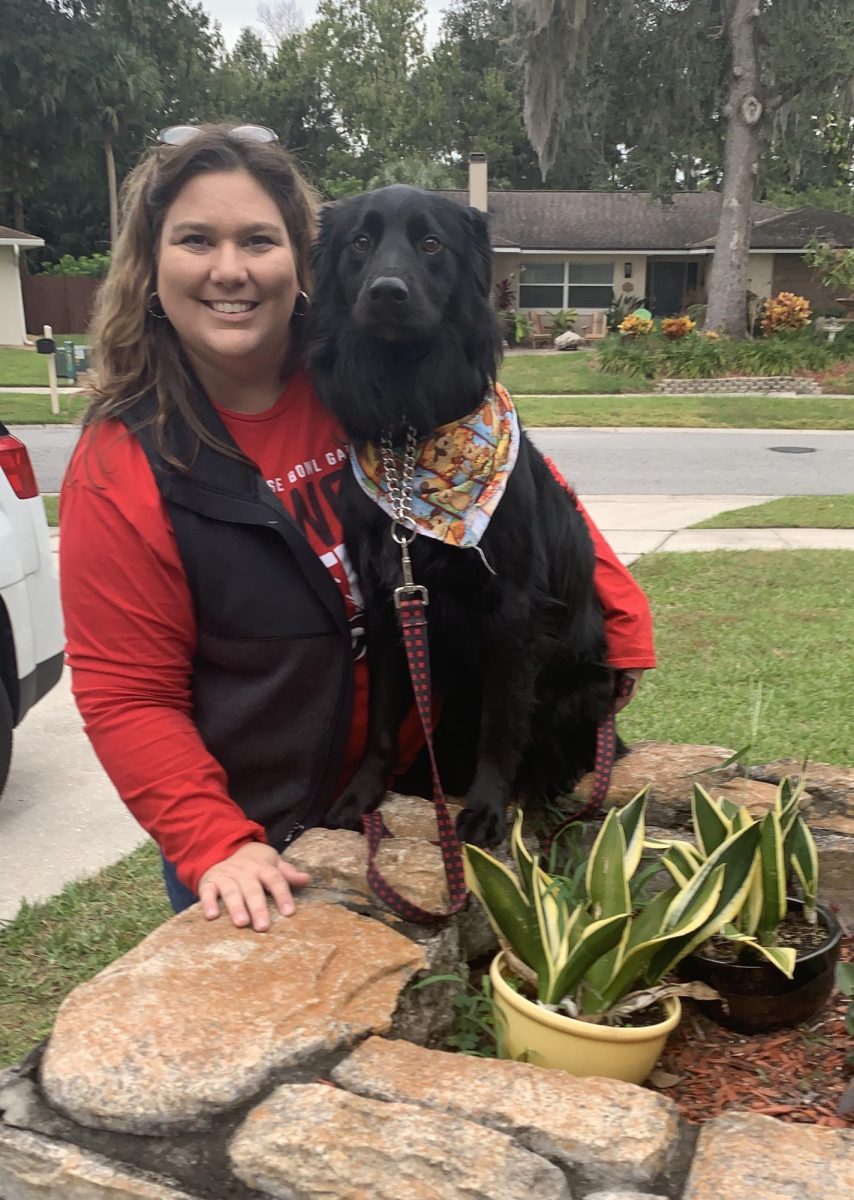English teacher Lenna Bowden shares her room with her sons Taylor and Matthew. While Matthew studies on the bed behind her, Taylor frequently runs in the room for hugs. Both kids wave and greet Bowden’s class of sixth graders. This is a typical day of online school for Bowden. She manages to balance time spent with her kids and teach online classes.
Bowden’s six-year-old son Taylor, and her 11-year-old son Matthew, have their own online school to attend while their parents teach.
The kids’ online school includes five hours of learning and activities every day. To help manage this long and difficult workload, Bowden printed out a school schedule with Matthew’s homework. Matthew crosses it out as he goes, so it keeps him organized and proactive with the work.
Luckily for Bowden, the kids can take care of their own morning routines.
“[Matthew] will help take care of Taylor if Ryan and I both have a first period class or meeting to attend-take care of breakfast, take the dog out, feed the dog, make sure both boys are dressed,” Bowden said.
Since both Mrs. and Mr. Bowden are working, they have to find time to help the kids with school.
“They basically work around our schedule,” Bowden said.
Social science teacher Michael Hopkins is in a similar circumstance. He has an eleven-month-old son Ryder, who loves to crawl around and make lots of noise.
“My office is Ryder’s playroom, so there’s a lot of sharing and flexibility that has to go on,” Hopkins said.
While teaching classes, Hopkin’s wife helps him with childcare duties. He tries to divide his time spent teaching with his time with Ryder.
“We’re trying to compromise and figure out how we can make it work where Ryder still gets the things he needs, and I still have the space to get what I need to get done,” Hopkins said.
English teacher Loryn Martini has a different experience with childcare. Her 19-month-old son Gordon is able to go to a special daycare for first responders and essential personnel because her husband is an engineer with General Dynamics.
“They’re taking extreme precautions, but because they give childcare to first responders and essential personnel, which is something my husband is considered as well, they are still open normal hours,” Martini said.
According to Martini, Gordon’s daycare’s protocol to stay open includes changing out of scrubs or uniforms for healthcare workers, using hand sanitizer when parents go in the daycare, washing hands when entering a classroom, and allowing only one parent allowed inside for drop off.
“I feel a lot of guilt for taking him to school and not being at home with him, but I also am really thankful that the school is open because it allows him to have some consistency,” Martini said. “It allows me to teach you guys, and it allows life to feel relatively normal in a relatively un-normal time.”
Bowden, Hopkins and Martini all say that they stick to a schedule to try and keep things as normal as possible for kids and themselves.
“Any semblance of routine we can keep [Ryder] in, it works out better for everybody, so we’ve really tried to prioritize that,” Hopkins said.
On top of keeping old habits and routines, more free time surrounding classes emerge, creating new activities.
“We’ve been implementing mandatory family bike rides on the Cross Seminole Trail every evening, and the boys will hold us to that,” Bowden said.
Martini also has more opportunities to play and bond with her child. She said she enjoys doing mini workouts with Gordon and her husband outside now that they have extra time together.
Taking care of kids while teaching classes is a new experience for these teachers, and they have to navigate their own path to find out what works for them.
“It requires flexibility, jumping around to different places, and making it work, making sure everybody’s got what they need,” Hopkins said.















